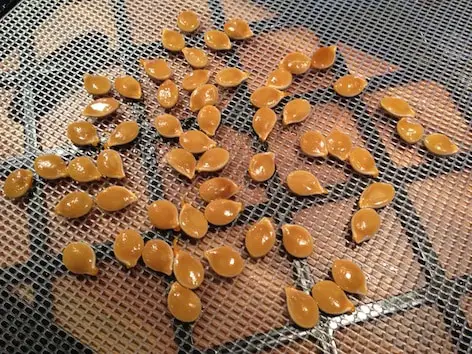 Seed must be dried before it is stored or sown; if not, the seed can spoil and rot. In general, Prosopis seed should be dried to a moisture content of 10 to 12 percent, or even less, prior to storage. Under these conditions, respiration continues at the low level required to keep the embryos alive, and only relatively small amounts of the stored carbohydrates are converted into carbon dioxide in the process.
Seed must be dried before it is stored or sown; if not, the seed can spoil and rot. In general, Prosopis seed should be dried to a moisture content of 10 to 12 percent, or even less, prior to storage. Under these conditions, respiration continues at the low level required to keep the embryos alive, and only relatively small amounts of the stored carbohydrates are converted into carbon dioxide in the process.
Air drying
In many situations, drying seed in the air may be all that is necessary before storing it in air-tight containers. In fact, while specific data are not available, Prosopis seed that is air-dried at room temperature probably remains viable for several years.
Newly extracted seed should pass quickly to drying floors, usually hard platforms that are smooth, tight, and previously cleaned of all impurities. If desired, the platform may be divided into individual compartments to allow different seed collections to be simultaneously dried.
Brick platforms, which are relatively cheap to construct and maintain, can be built to serve as drying floors. Also, tarpaulins spread on the ground under protective covers can be used.
Regardless of the approach used, care must be exercised to prevent the seed from overheating.
Kiln drying
Artificially heated and ventilated kilns can be used to dry seed, especially when large quantities of seed are required. Kilns, which can be of many designs, are based on the following principle: hot air is circulated between racks in a room in which seed has been spread. The hot air, which should be evenly circulated within the room, should never exceed 50°C, or most of the seed will be killed. The moving air must be drier than the seed, and the moisture-laden air must be withdrawn from the kiln as soon as possible.
Preliminary air drying of seed reduces the amount of energy necessary in kiln drying, and so saves expenses.
Original Article Here







